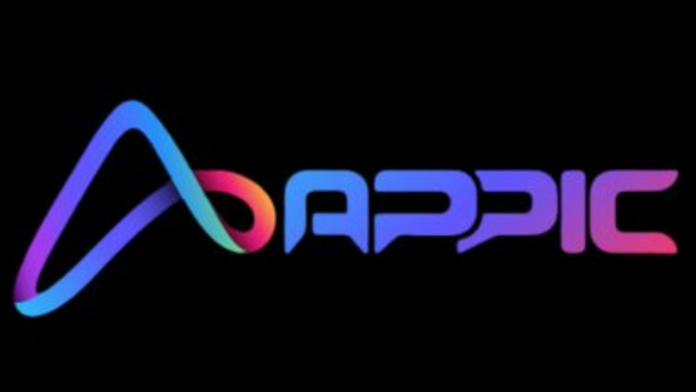Appic DAO has introduced a direct way to bridge ETH to ckETH using its Crosschain EVM Bridge. The process is designed for speed and transparency, allowing users to move assets with minimal friction. Unlike traditional bridging methods, this approach ensures users see all fees and the final transaction amount before confirming, keeping surprises out of the equation.
ckETH operates as a 1:1 ETH-backed token on the Internet Computer, running through ICP’s smart canisters. This means faster transactions and seamless integration within the Internet Computer ecosystem. With decentralised finance continuing to expand, bridging solutions like this offer a streamlined way for users to access different blockchain networks without unnecessary delays.
The process of using Appic’s bridge is straightforward. Users connect their wallets once, and the system handles the rest. The transaction is completed within minutes, providing a frictionless experience for those looking to move assets efficiently. Given the complexity that often accompanies cross-chain transactions, a simplified and transparent process is a welcome shift.
Cross-chain functionality has become an essential feature in blockchain development. While networks evolve independently, interoperability remains key to expanding blockchain’s practical use. Tokens like ckETH enable ETH holders to operate within the Internet Computer ecosystem without needing to go through cumbersome wrapping or conversion steps.
Fees have often been a sticking point in cross-chain transactions. Many bridges charge unpredictable costs or add hidden fees at the last moment, leaving users frustrated. Appic’s approach aims to counter this by displaying all fees upfront, ensuring users know exactly what they are committing to before confirming a transfer. This level of clarity can make a significant difference, particularly for those handling frequent transactions.
Blockchain bridges are a crucial part of decentralised finance, enabling assets to move across different ecosystems while retaining their original value. The introduction of ckETH into the Internet Computer environment expands opportunities for smart contract interactions and decentralised applications. Given ICP’s structure, users can expect a high level of efficiency when utilising ckETH in transactions or DeFi applications.
Speed has long been a concern when moving assets between blockchains. Traditional methods often require long wait times for transactions to finalise, sometimes spanning hours. Appic’s Crosschain EVM Bridge is designed to eliminate these delays, offering near-instant transfers. This not only improves user experience but also makes blockchain interoperability more practical for everyday use.
Security remains a priority in the blockchain space, and bridging assets has often introduced risks, particularly with third-party solutions. Appic’s bridge leverages smart canisters on ICP, which enhances security by reducing reliance on external validators. By keeping transactions within the ICP framework, the risk of exploits commonly seen in other bridging methods is mitigated.
The introduction of ckETH marks another step in making ETH assets more versatile across blockchain ecosystems. With a 1:1 backing, users maintain confidence in the token’s value while benefiting from faster transaction speeds and lower fees. As blockchain networks continue to interconnect, solutions like Appic’s bridge offer a glimpse into the future of decentralised finance.
Adoption of cross-chain solutions has steadily increased as users seek more efficient ways to move assets. The ability to connect different blockchain environments without hassle can enhance the practicality of decentralised applications. Appic’s approach aligns with this need, making it easier for ETH holders to leverage their assets within the Internet Computer’s ecosystem.
Transparency and ease of use have been recurring concerns in blockchain bridging. Many users hesitate to move assets across networks due to unpredictable fees and complex processes. Appic’s method addresses these issues by providing clear information upfront and a simple transaction flow, reducing the barrier to entry for those unfamiliar with cross-chain mechanics.
The integration of ckETH within the Internet Computer ecosystem opens new possibilities for decentralised applications. Developers can now leverage ETH-backed assets without needing to rely on external chains, streamlining processes for smart contracts and financial applications. This could lead to new innovations within ICP’s environment as developers explore the capabilities of ckETH.
The blockchain space is constantly evolving, and solutions that prioritise user experience tend to gain traction quickly. Appic’s bridge offers a straightforward way for ETH holders to engage with the Internet Computer network without unnecessary complexity. By keeping the process fast, secure, and transparent, the bridge enhances accessibility for both experienced users and newcomers looking to explore ICP’s ecosystem.
Cross-chain functionality has often been associated with technical barriers that discourage casual users. Appic’s approach simplifies the process, making it more accessible to a wider audience. As decentralised finance continues to evolve, ease of use will play a significant role in adoption, and solutions that prioritise user-friendly experiences are likely to stand out.
As blockchain technology progresses, the demand for efficient bridging solutions will only increase. Appic’s Crosschain EVM Bridge presents an option that balances speed, security, and simplicity, helping ETH holders transition into the Internet Computer’s ecosystem with minimal effort. With decentralised finance gaining traction, innovations like ckETH are poised to play a significant role in shaping blockchain’s interconnected future.


